The adaptability of pyFlare to access advanced data visualization and calculation functionalities
We showcase some examples within a drug discovery context where the pyFlare environment has been further expanded with advanced data ...
News
I am delighted to announce the release of a new version of Spark™, our scaffold hopping and bioisostere replacement tool. The focus of V10.5 is on advanced workflows and improved database management but also includes new science and many new and improved features.
The most interesting new features are presented below, and I encourage you to try this new release for yourself to see them in action.
The new Spark wizards will help you set-up advanced bioisostere replacements experiments in a user friendly and scientifically robust manner.
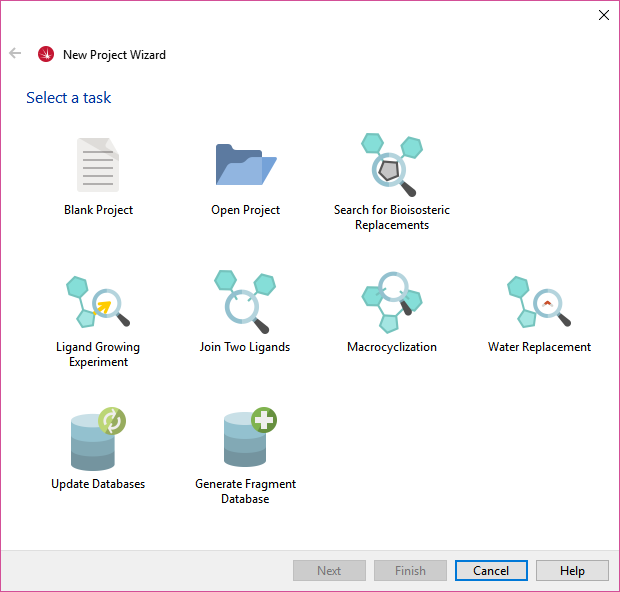
The ‘Water Replacement’ wizard (Figure 2) can be used to search for a group which will displace a crystallographic water molecule near your ligand. Again the new wizard significantly improves the workflow for this popular Spark experiment that we have detailed previously (see case study Displacing crystallographic water molecules with Spark).
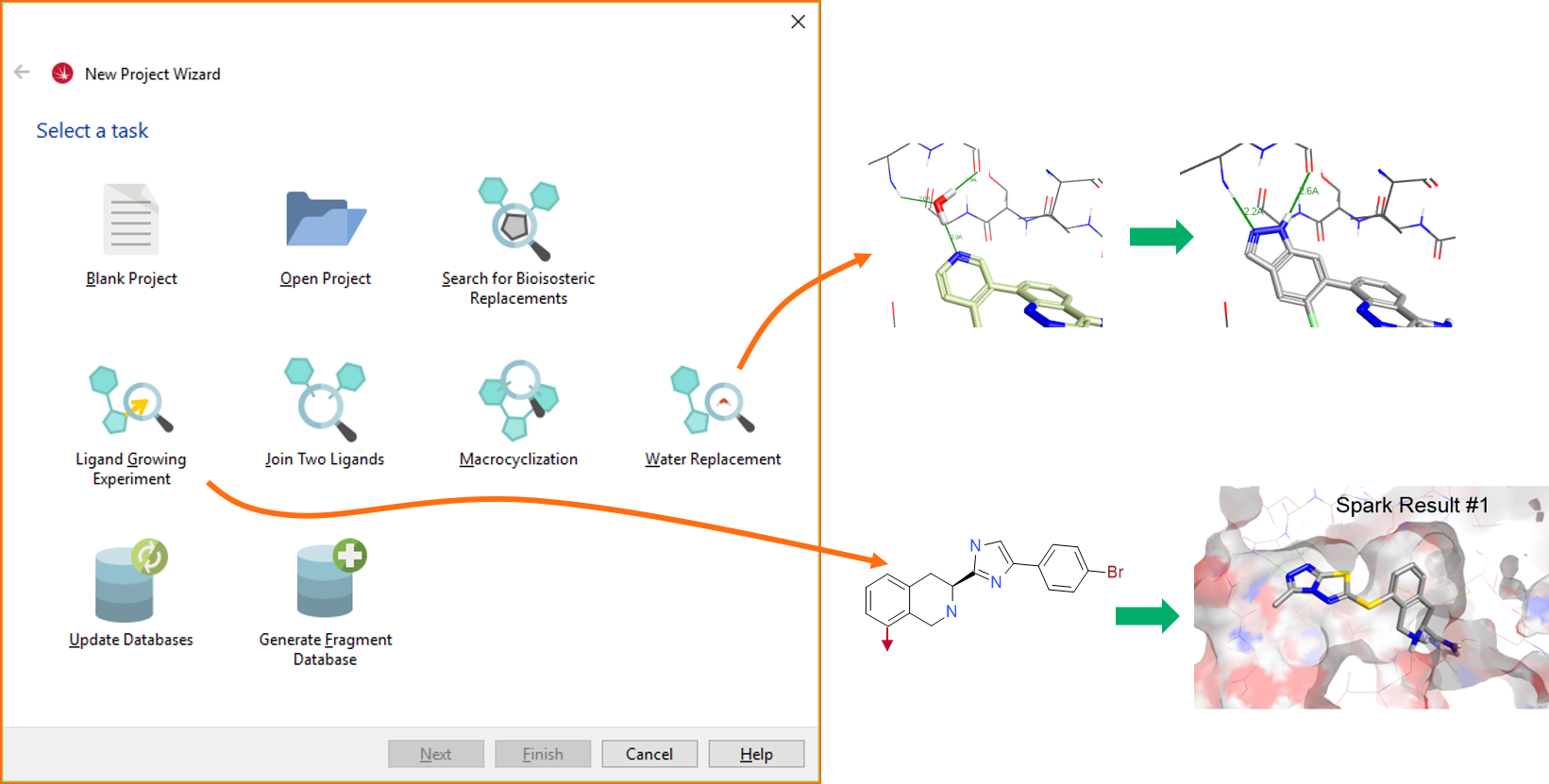
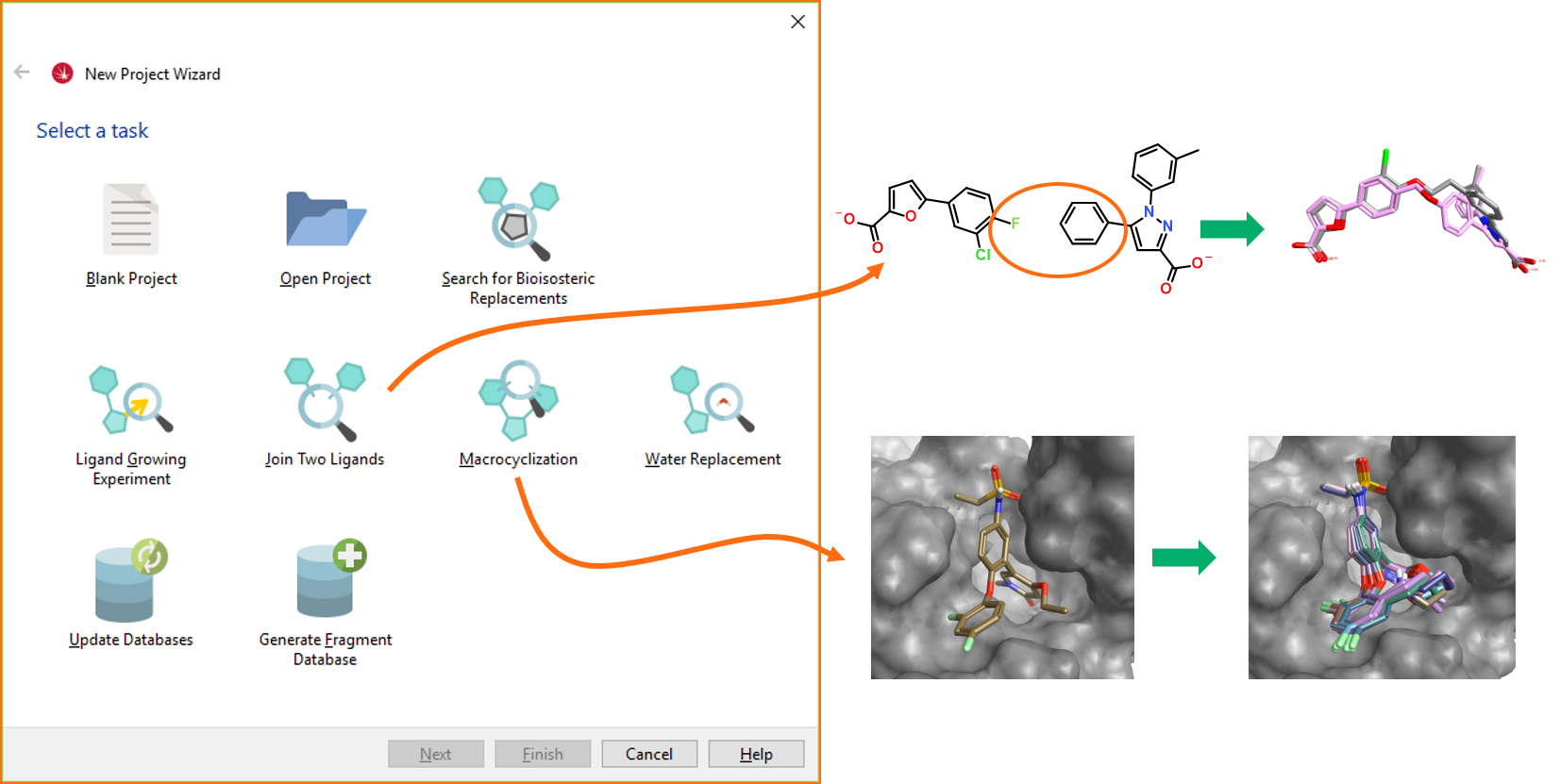
These advanced bioisostere replacement experiments work well because of Spark’s product-centric approach. In Spark, result molecules are compared to the starter molecule, and a similarity score is calculated, only when the new molecules have been formed, minimized, and their fields and field points re-created. This approach, combined with the power of the Cresset XED force field, enables Spark to work with a higher level of precision, by avoiding fragment scoring limitations, allowing for neighboring group effects and for the electronic influence of replacing a moiety on the rest of the molecule and vice versa.
Spark V10.5 offers considerable improvements to the Spark database update functionality, to make this process more user friendly and efficient.
The Spark search dialog now alerts you when an updated version of the databases is available, before you start a search. Databases which need updating are marked by a green icon (Figure 4): and if the databases are selected for the Spark search, an ‘Update’ link appears at the bottom of the window, taking you directly to the Spark Database Updater. You will find this particularly beneficial if you use the eMolecules reagent databases where our monthly release schedule provides you with the latest availability information.
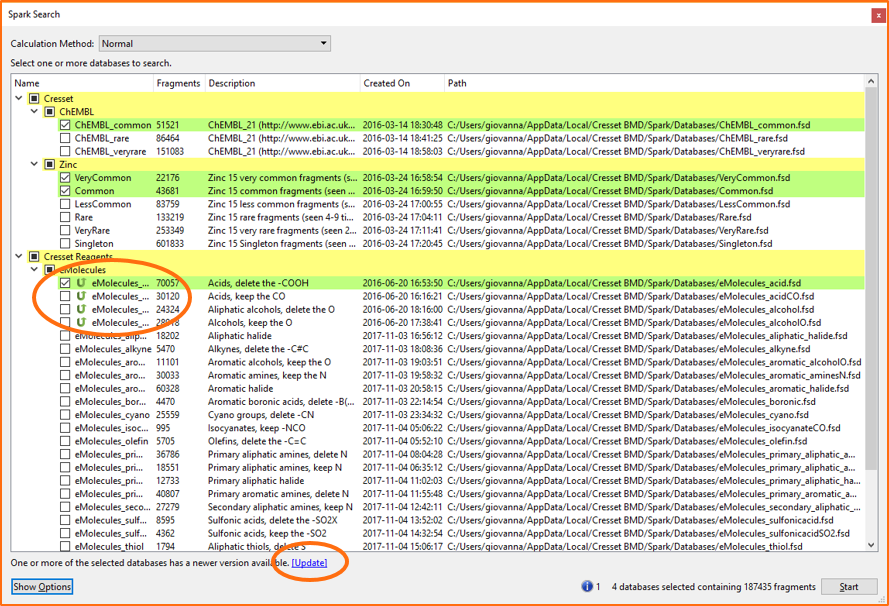
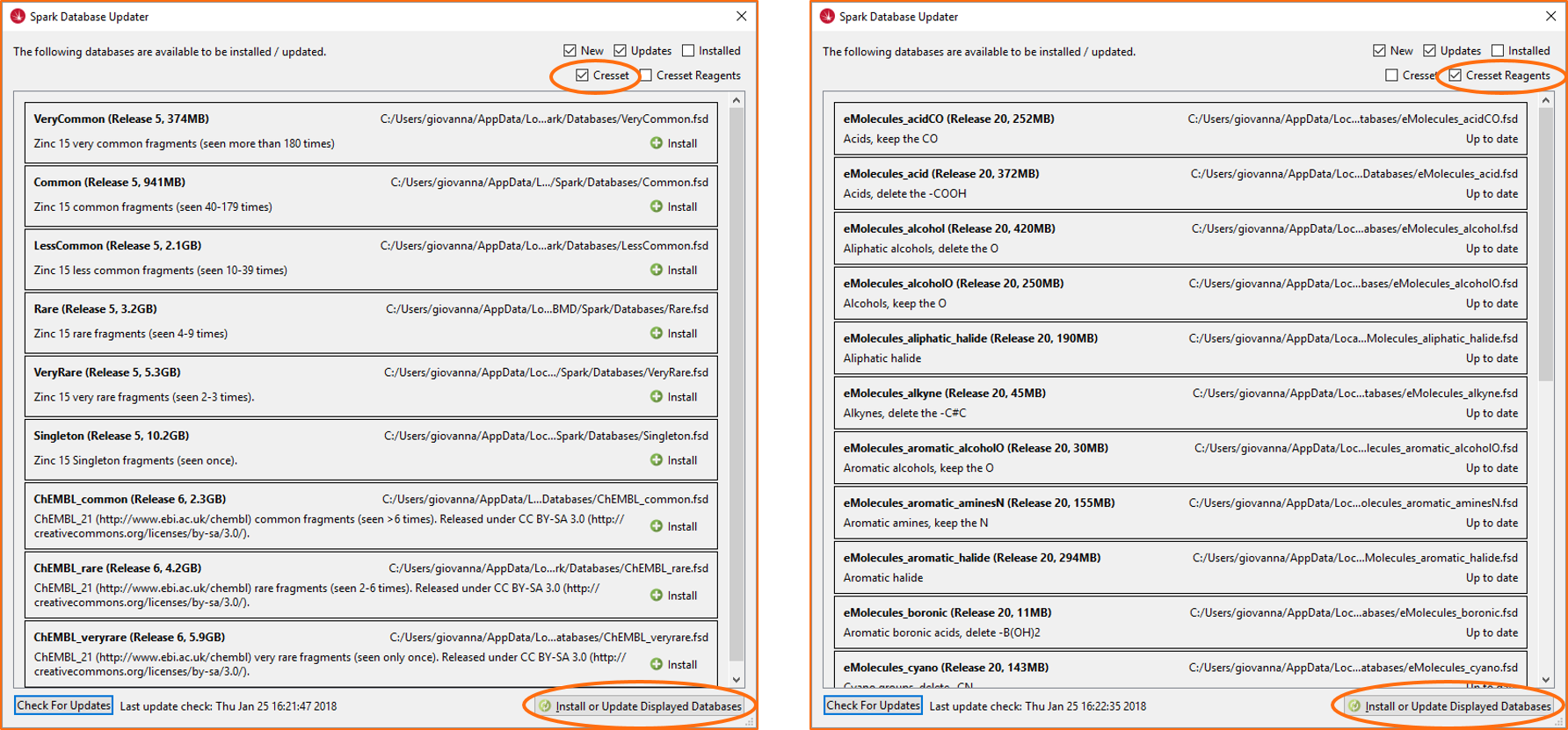
A significant number of improvements and new features to the Spark searches have been made in this release.
Field and pharmacophore constraints can be used to bias the Spark search towards results which fit the known SAR or your expectations, by introducing a penalty which down-scores results that do not satisfy the constraint.
Field constraints enable you to specify that a particular type of field must be present in the Spark result. For example, you may want to a constrain a positive field where you want an interaction but this can be matched by both H-bond donors and other electropositive features such as the aromatic hydrogens of the compound in Figure 6 – right.
Pharmacophore constraints, new in Spark V10.5, ensure that the desired pharmacophore features are matched by an atom of a similar type in the Spark results. In Figure 6, a pharmacophore constraint was introduced to ensure that all Spark results contain a H-bond acceptor.
While field and pharmacophoric constraints are a powerful way of fine tuning Spark results, we recommend that they are using sparingly, as they will be introducing a bias in your experiment. For example, introducing a pharmacophore constraint on the indazole NH of the PDB 4Z3V ligand in Figure 6 – left would not have matched the aromatic hydrogens of the active ligand in Figure 6 – right.
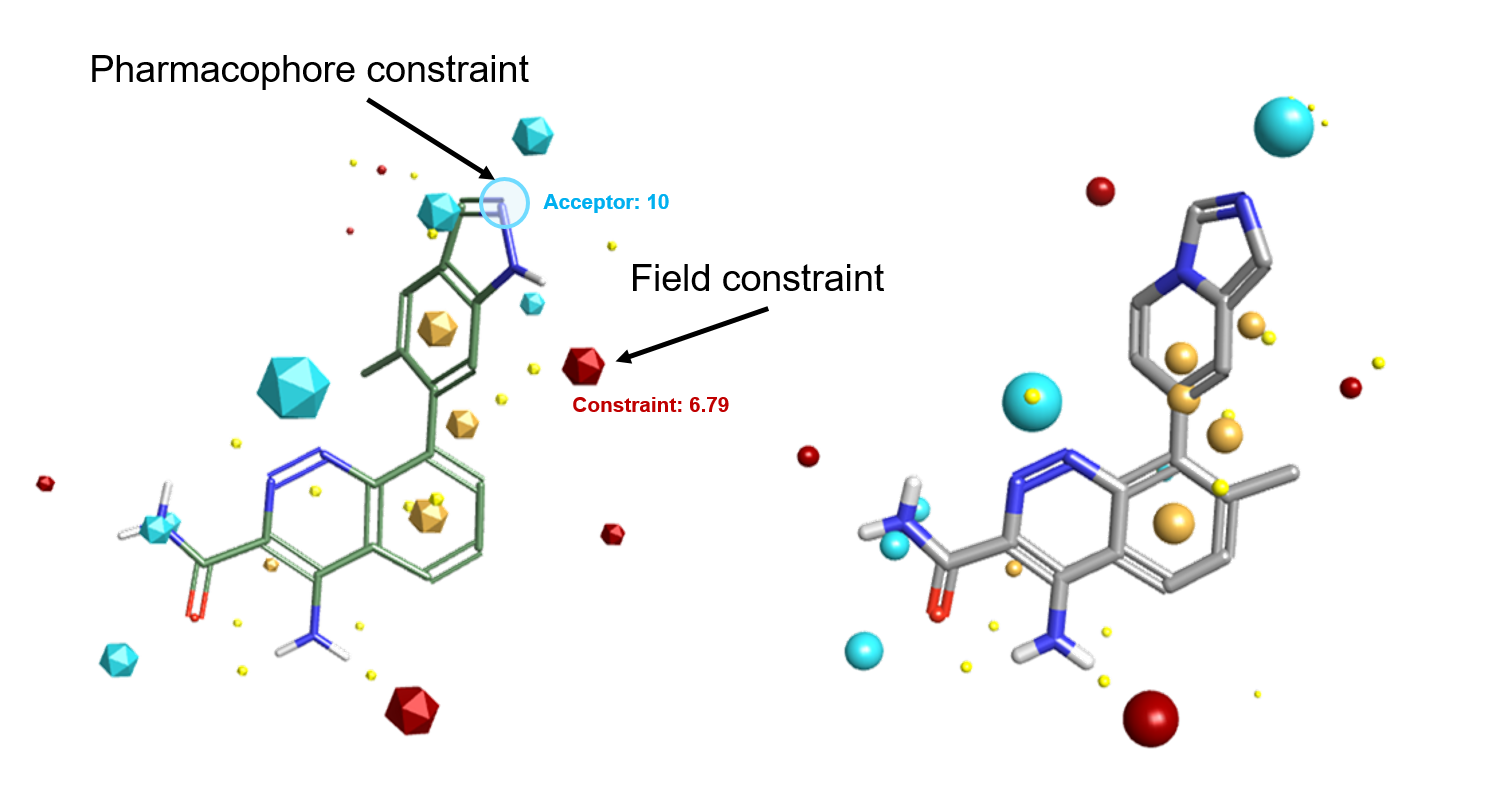
Spark V10.5 also includes enhancements to the search algorithm and associated advanced options, for example:
This Spark V10.5 release also includes a variety of additional new functionalities and improvements to the interface (Figure 7). These include:
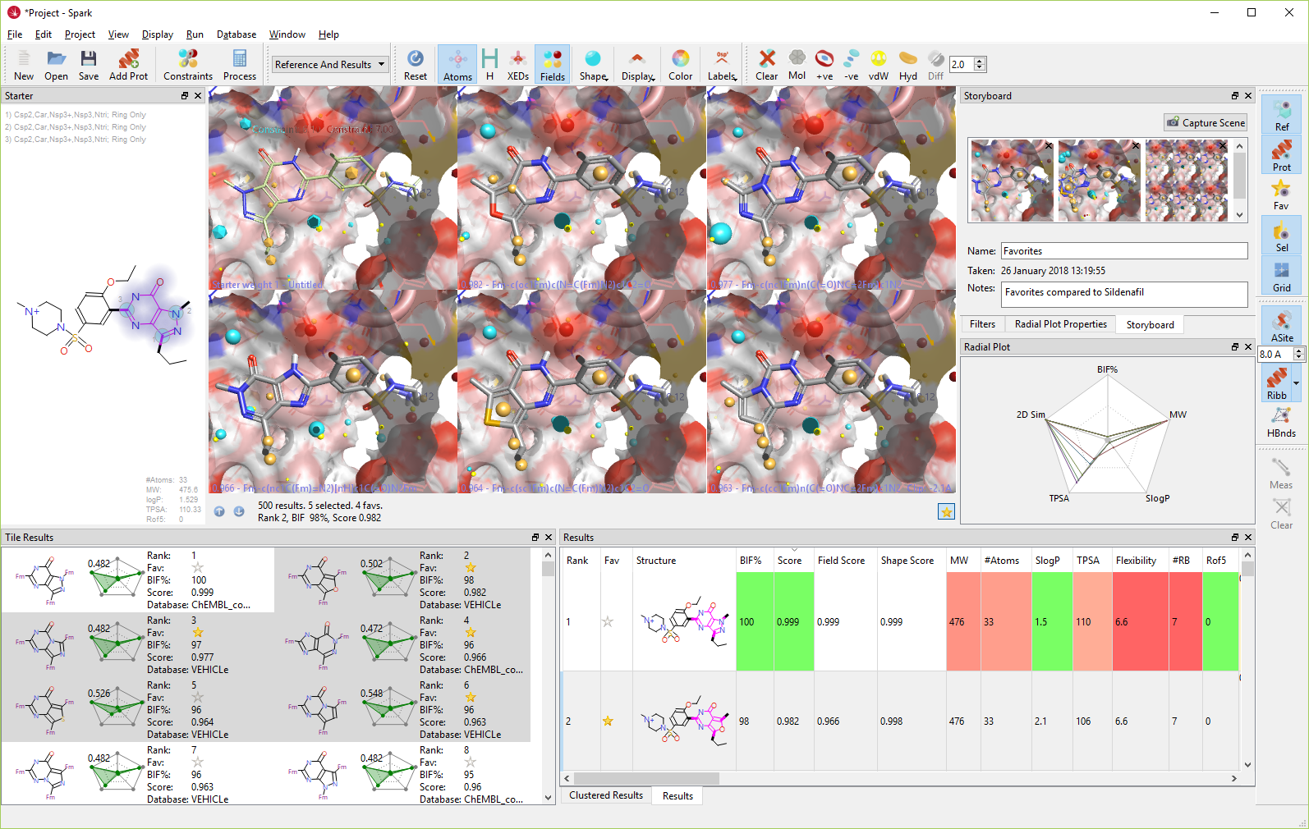
This release represents a significant improvement in the usability and flexibility of the leading bioisostere application. I encourage you to upgrade your version of Spark at your earliest convenience, and to download the keyboard shortcut guides for Spark V10.5 and Spark V10.5 Molecule Editor.
If you are not currently a Spark customer, please request a free evaluation.
Contact us if you have queries relating to this release.